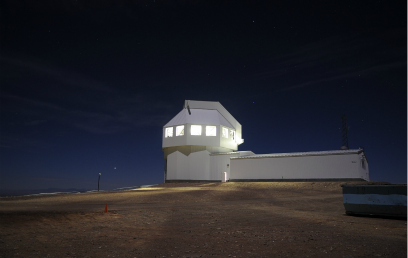Shhh, We’re Hunting Asteroids
DARPA’s Space Surveillance Telescope is seeking out potentially Earth-threatening asteroids
At a little after 10:00 EST this morning, a “bus-size” asteroid will give us a little buzz. It isn’t big enough to do damage, even if it were to hit our atmosphere, but its a reminder that there are objects out there that we might want to be worried about, if only we knew where they were.
Now an innovative new telescope is getting into the asteroid hunting game. DARPA’s Space Surveillance Telescope (SST) had its first light early in 2011, and is now officially online and going through its first demonstration, seeking out potentially Earth-threatening asteroids.
It’s not the first asteroid hunter. Among others, NASA’s WISE (Wide-field Infrared Survey Explorer) space telescope found over 33,000 new asteroids during its all-sky survey in 2010 (the team will be publishing their official results this March). There’s also the Panoramic Survey Telescope & Rapid Response System (Pan-STARRS) on top of Mount Haleakala in Maui, Hawaii. The team’s goal since they started operations in 2010 is to complete a survey of all asteroids over 1 km wide.
DARPA hopes the SST will fill out that catalog further by seeing even smaller, but still potentially dangerous, asteroids. Commissioned in 2002, the SST is unique in that its “mirrors are some of the steepest aspherical curvatures ever to be polished, and allow the telescope to have the fastest optics of this aperture class.” It’s short focal length and wide field-of-view allow it to be moved rapidly. By seeing smaller objects, it can help protect not just Earth, but satellites in orbit — military satellites, that is, as SST is primarily run by the U.S. Air Force at the White Sands Missile Base in New Mexico.
